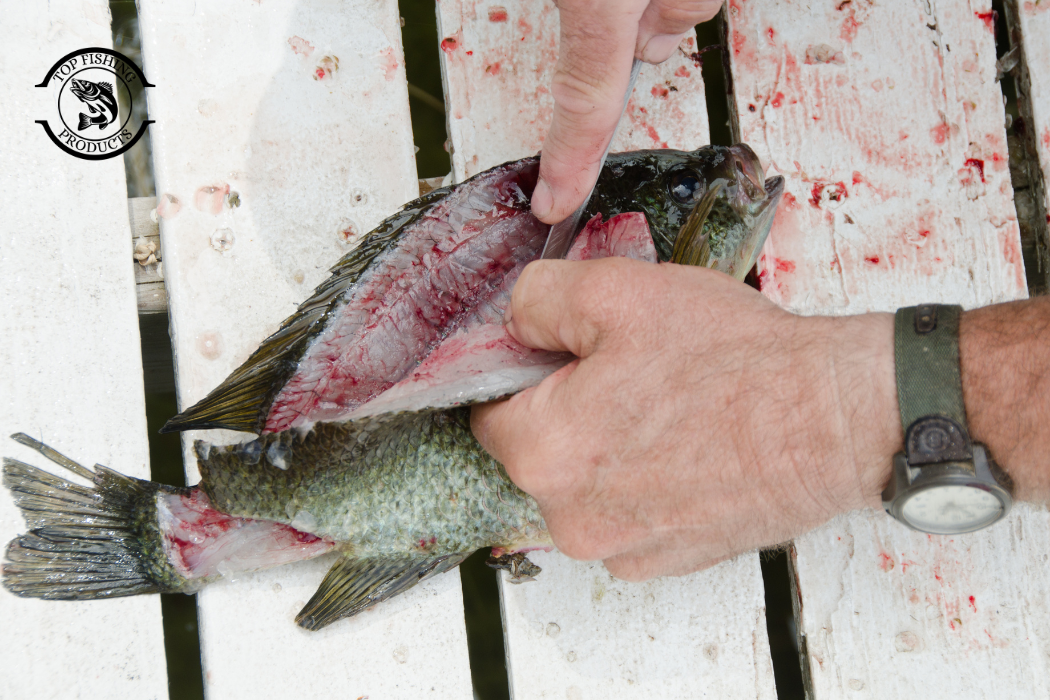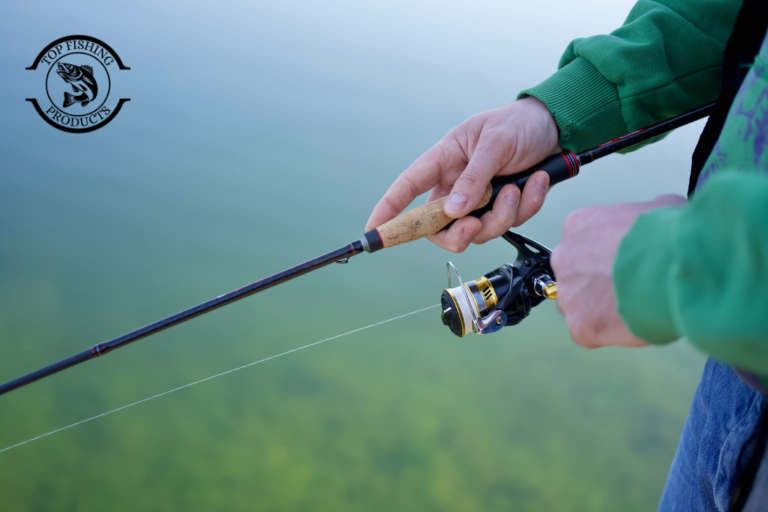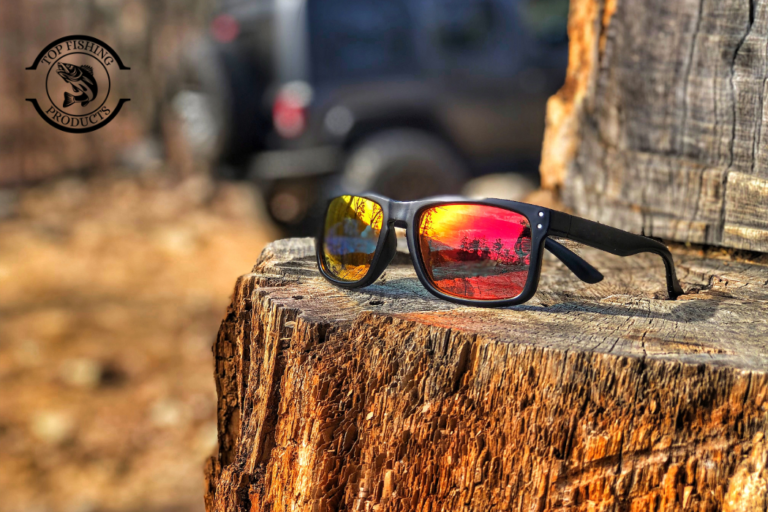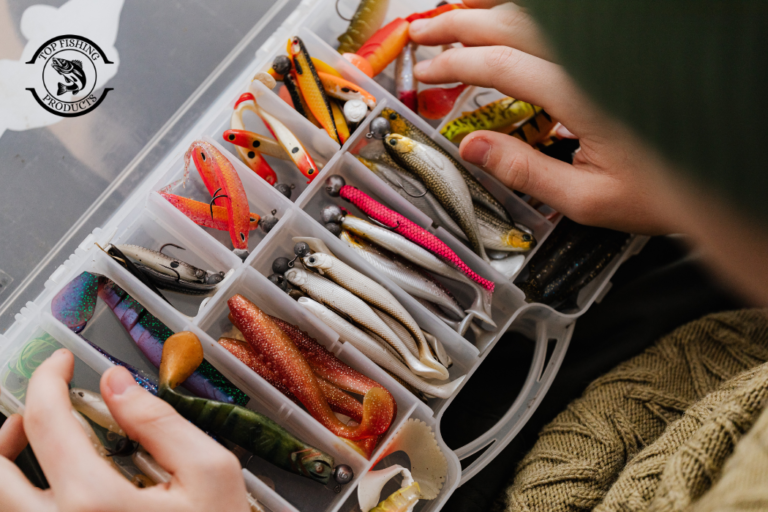Most people, especially those who enjoy seafood or catch their own fish, would like to learn how to fillet a fish. Cutting the clean meat away from the bones, head, and skin is known as filleting. People can enjoy already filleted fish when they purchase it from a market. When it comes to you, you have more control over the quality, size, and even cost of the fish if you learn how to do it at home.
Whether it’s a large salmon fish, medium trout, or small snapper, you can effortlessly get into it. Let’s get into more detail and see how to clean and fillet a fish step by step:
Why Learn How to Fillet a Fish?
Filleting is more than just cutting meat. It is a skill that gives you many benefits. Many beginners often search for the easy way to fillet a fish, and once you try it a few times, the steps become very simple. Most people are worried when they chop up fish for the first time since it appears like a difficult task. No doubt, with the right tools and experience, it becomes simple and even enjoyable.
Because filleting allows you to remove as much flesh as possible while just leaving bones behind. The more flesh you clean, more you reduces waste. Depending on how you plan to prepare the fish, this process also gives you the option to leave the skin on. You may have clean, tasty meat for your meals if you know how to fillet your own fish. Let’s look at them in detail:
Step 1: Save Money
Buying a whole fish is typically less expensive than buying grocery store fish fillets. Stores charge more for the cutting and cleaning when they sell fillets. You can buy the whole fish, which is less expensive, and then fillet it yourself if you learn how to do it at home. In addition to getting you more fish for the same price, you also learn a useful ability that you can use again and again in the future.
Step 2: Get Fresh Meat
When it comes to seafood, freshness matters. A fish fillet that has been cut with your own hands is always fresher than one that has been refrigerated for days. If you go fishing yourself, filleting it right away after cleaning it maintains the meat’s firmness and flavor. Even if you buy the fish at the market, you can still check its freshness by looking at its eyes, gills, and skin before filleting it at home. This helps you eat meals that are high-quality and flavorful.
Step 3: Control the Cut
You have control over the size and thickness of the pieces when you fillet your own fish. For example, you may want little cubes for soup or long strips for frying. Although store-bought fillets are often offered exclusively, filleting your own gives you more options. It is easier to cook because you can coordinate the parts with the meal you are going to prepare.
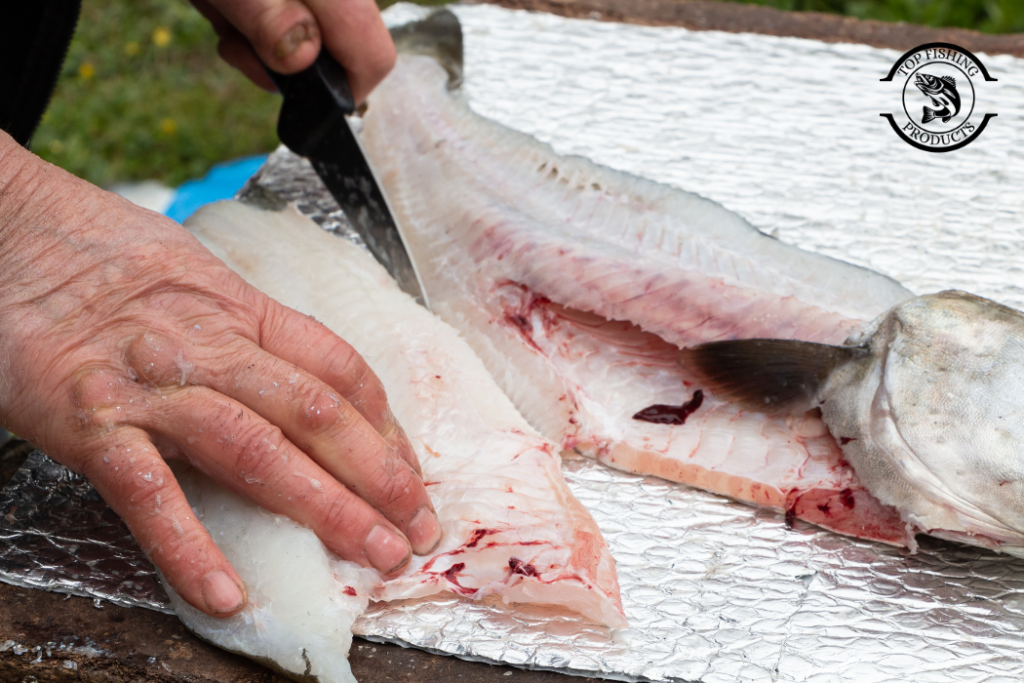
What Types of Fish Are Best to Fillet at Home?
You can fillet almost any fish, but some are more suited than others. For beginners, solid, medium-sized fish are usually the best. Fish having the easiest texture to work with a knife are cod, tilapia, bass, trout, and snapper. Their meat holds together well, and their bones are not too thick.
Because of their size and strong bone structure, taller fish like grouper or salmon can also be filleted at home, although it takes more experience. On the other hand, because you lose too much meat when filleting very little fish, it might not be worth it. Starting with fish that produce respectable fillet portions without adding too much complexity is what you want to do.
The Best Tools for Filleting a Fish
Having the right tools makes the job faster, safer, and cleaner. Go ahead to have a look at all the equipment we need for filleting a fish and how to use them. Let’s dive into:
Step 1: Get a Fillet Knife
A sharp fillet knife is the most important tool. It has a long, thin, and flexible blade that moves easily along the bones. This design helps you remove more meat without waste. A dull or thick knife will tear the meat and make the job difficult, so always choose a good-quality fillet knife. Many beginners ask, Can you fillet a fish without a fillet knife? The answer is yes, but it is much harder and less clean compared to using the proper knife.
Step 2: Use a Strong Cutting Board
Filleting should always be done on a large and solid cutting board. The board should not slip when you cut because that can be dangerous. A wooden or plastic board works well, and it should be easy to wash after use. Some people also use boards with grooves to catch the fish juice and keep the place clean.
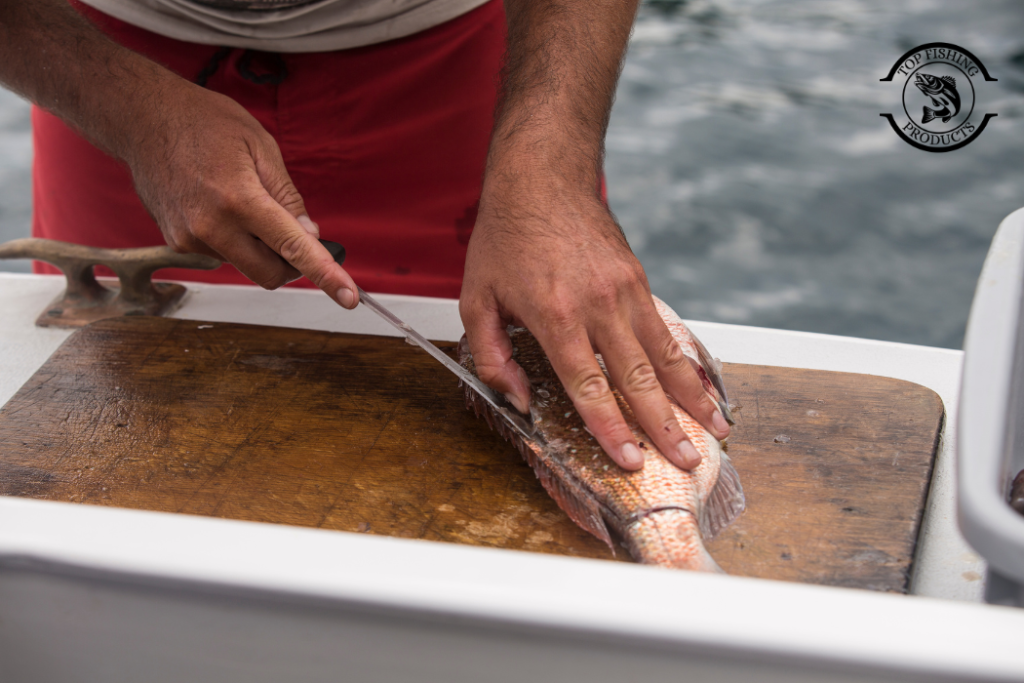
Step 3: Keep Towels Ready
Fish are slippery, and your hands can get wet while cutting. If your hands slip, the knife may cut in the wrong direction and cause harm. Keeping a towel nearby helps you dry your hands and keep a strong grip on both the knife and the fish.
Method of Filleting a Fish Step by Step
Filleting a fish means cutting clean pieces of meat without bones. Many people think it is hard, but it can be simple. With the right knife and a little practice, you can do it at home. Let’s understand the easy steps to do it:
Step 1: Place the Fish on the Board
Lay the fish flat on the cutting board with the belly facing you. Make sure the fish is steady before you begin cutting.
Step 2: Cut Behind the Gills
Insert the knife just behind the gills and cut down until you reach the backbone. Do not cut through the backbone, only stop at it. This step separates the meat near the head.
Step 3: Slice Along the Backbone
Turn the knife sideways and slide it along the backbone towards the tail. Keep the blade close to the bones so you get as much meat as possible. Use a gentle sawing motion instead of pressing too hard.
Step 4: Lift the Fillet Away
As you cut, lift the meat slowly from the bones with your hand. Continue slicing until the fillet comes free. Place it aside on a clean plate.
Step 5: Repeat on the Other Side
Turn the fish over and repeat the same steps on the second side. This will give you two fillets.
Step 6: Remove the Skin (Optional)
If you want skinless fillets, place the fillet skin-side down. Hold the tail end and slide the knife between the skin and the flesh. Push the knife forward while gently pulling the skin back until it comes off.
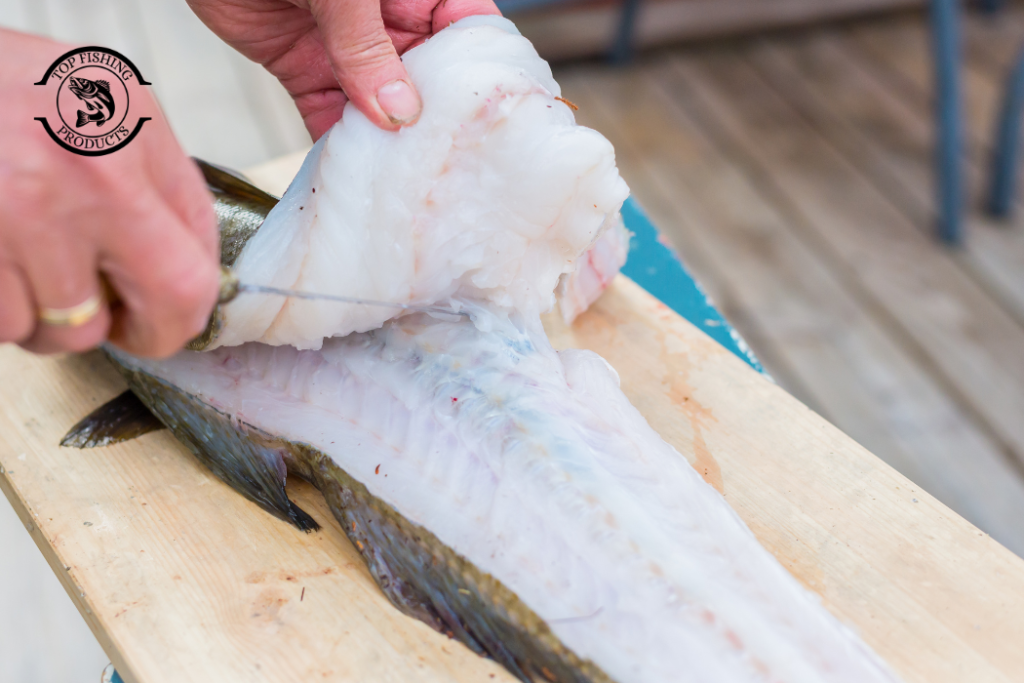
Step 7: Trim and Clean
Check the fillet for small bones or uneven edges. Trim them off with the knife. Rinse the fillets lightly with cold water and pat dry with a towel. If you wonder what are the four steps to filleting a fish? They usually include cutting behind the gills, slicing along the backbone, lifting the fillet away, and removing the skin.
How to Remove Fish Scales
Before you fillet a fish, you must remove the scales so the skin becomes smooth and clean. Go ahead with a smooth process:
Step 1: Hold the Fish Firm
Before you can fillet, you need to remove the scales. Place the fish flat on the cutting board and hold the tail firmly. Holding it tightly will stop it from slipping while you scrape the scales.
Step 2: Scrape the Scales
Use the back of your knife or a fish scaler to scrape the skin. Move from the tail towards the head, because that direction helps remove the scales faster. Keep scraping until all scales are gone and the skin feels smooth to touch.
Step 3: Wash the Fish
Once the scales are removed, rinse the fish under cold running water. This will clean away the loose scales and prepare the body for cutting. A clean fish is always easier to fillet because the knife moves smoothly over the skin.
Store-Bought Fish vs. Fresh-Caught Fish
Both fishes are very good in taste but having unique differences. Let’s dive into to understand the actual comparison:
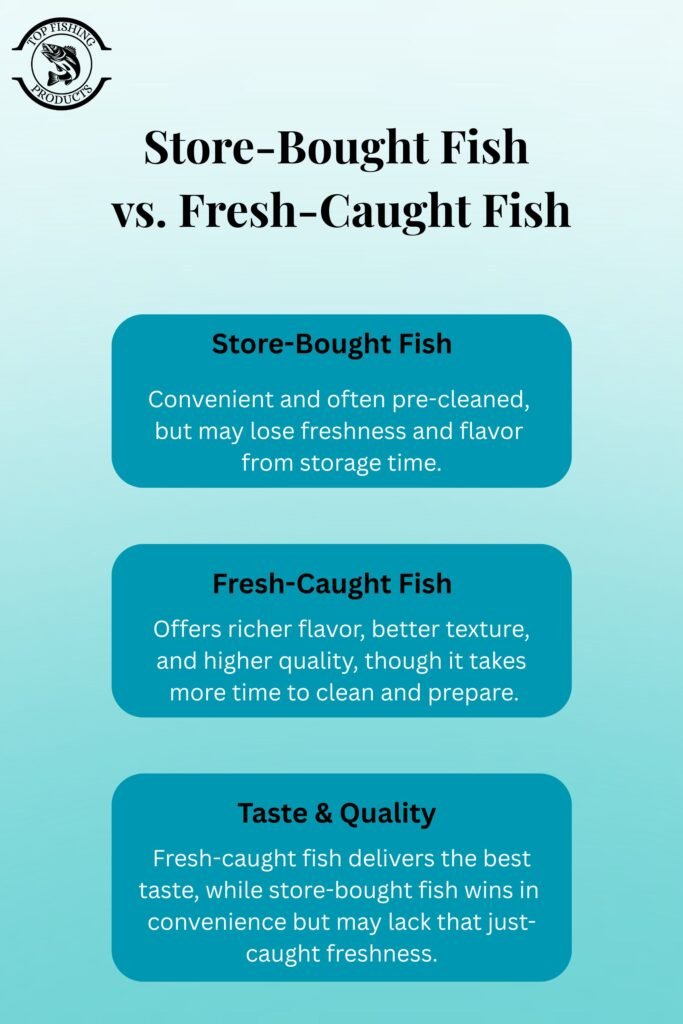
Step 1: Store-Bought Fish
This fish may already be partially cleaned and, in certain situations, scaled when you buy it at a store. Filleting is easier because you don’t have to perform certain stages. However, the store-bought fish isn’t necessarily the freshest. The flavor and texture of the fillet may be affected if the fish was kept in ice for several days before delivery.
Step 2: Fresh-Caught Fish
The best quality meat comes from freshly caught fish. Eating anything that you have personally caught has a richer flavor, a better texture, and a delightful finish. However, cleaning, gutting, scaling, and filleting are all necessary for fresh-caught fish. Although it takes longer and requires more skill but the results are worthwhile.
Step 3: Taste and Quality
Flavor is the biggest difference between store-bought and fresh fish. The flavor of fillets is always higher when they are caught fresh. Although store-bought is more convenient. Storage time can sometimes cause taste loss. It only happens when your store it for longer time.
Conclusion
A great kitchen tip that will save you money is knowing how to fillet a fish. After learning filleting, you’ll enjoy fresher food at your dining table. You can prepare clean fillets at home with the right fish, a good knife, and a little perseverance.
Both fresh-caught and store-bought fish will work like same. But scaling is a simple and crucial step to get the best results. Your fillets will cook more quickly and neatly by following the scaling technique, which is popular and useful at the same time.
Frequently Asked Questions:
1. Do I need a special knife to fillet a fish?
Yes, a special knife makes the job much easier. A fillet knife has a thin and flexible blade that moves smoothly along the bones. This helps you get more meat and cleaner cuts. If you use a regular kitchen knife, the cuts may not be neat, and you might waste more meat. A sharp fillet knife also keeps you safer because it does not slip as much as a dull one.
2. Can I fillet any type of fish?
You can fillet almost any fish, but some are easier than others. Small and medium fish like tilapia, trout, or snapper are good for beginners. Larger fish, such as salmon or grouper, need more skill and strength because of their size. Very tiny fish are not worth filleting because they do not have enough meat. So yes, you can fillet many kinds, but it is smart to start with the easy ones.
3. How do I know if a fish is fresh before filleting?
Fresh fish has clear, bright eyes, and the skin looks shiny. The gills should be red or pink, not brown. When you touch the body, the flesh should feel firm, not soft or mushy. A fresh fish also has a mild smell, not a strong, bad odor. Checking these signs before filleting is important because fresh fish always tastes better and is safer to eat.
4. What should I do with the fish bones and head after filleting?
Do not throw them away right away. Many people use fish bones and the head to make soup or stock. These parts still have a lot of flavor, even if there is not much meat left. If you do not want to cook them, you can throw them out, but some people even use them as garden fertilizer. Using the leftover parts helps reduce waste and gives you more value from the fish.


